Spirostreptida: genera other than Amastigogonus
Back to Spirostreptida key
Atelomastix spp. (Iulomorphidae)
The two Tasmanian Atelomastix species are uncommon southern/southwestern species and may be parapatric. Nothing is known yet about their biology or ecology. Numerous Atelomastix species are found in Western Australia; one species occurs in the Grampians in western Victoria.
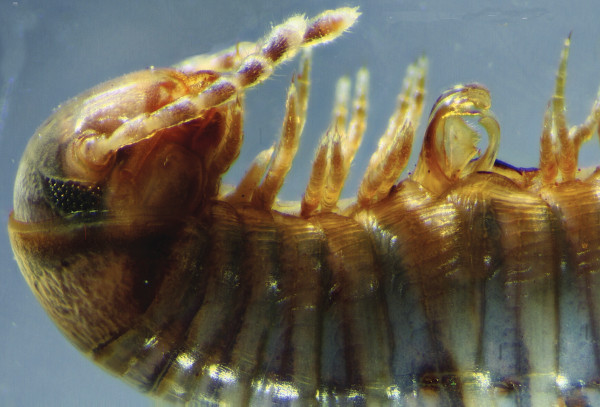
Lateral view of Atelomastix bonhami showing partly emerged gonopods
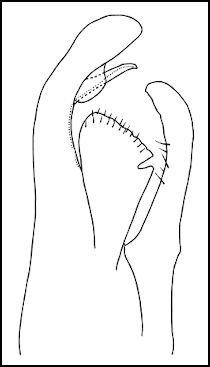


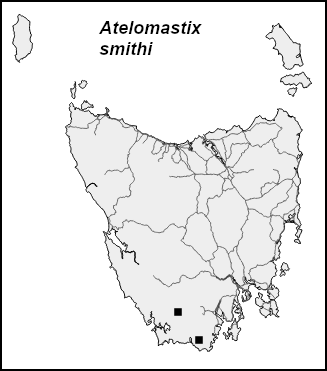
Medial views of left anterior gonopod of Atelomastix bonhami (top) and A. smithi (bottom)
Equestrigonus tasmaniensis Mesibov, 2017 (Iulomorphidae)
Equestrigonus tasmaniensis is prominently banded (light/dark, see image left) and the "cheek" extends ventrally (image right, arrow). This distinctive species is abundant in wet forest in the northwest and northeast, but has not yet been found in the central north (see map). It occurs in groups in leaf litter and richly organic soil. The gonopod drawing (below) is an anterior view of the left (anterior) gonopod.
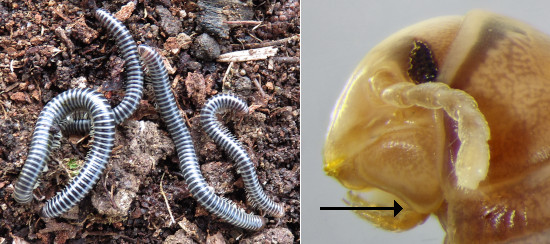
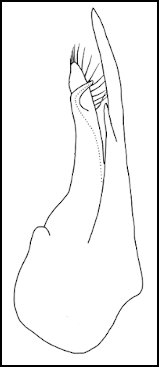
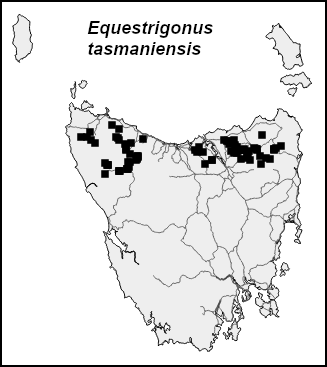
Talomius weldensis Mesibov, 2019 (Iulomorphidae)
Three males of T. weldensis were found among ca 50 Amastigogonus verreauxii in a pitfall trap set at 600 m on Mt Weld and emptied on 28 March 2012. No other specimens of this small, highly unusual iulomorphid are known. The genus name is an anagram of "Tasm"+"iulo".
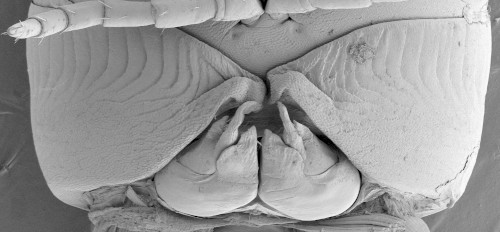
Ventral view of gonopods in situ, head to top of image
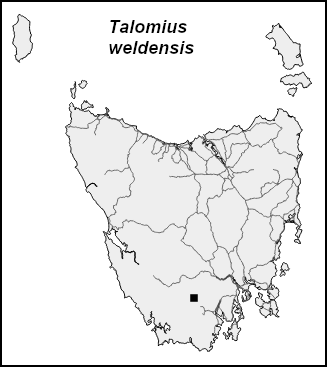
Cambalidae: Tasmanocambala greeni Mesibov, 2019
T. tasmanica Mesibov, 2019
T. taylori Mesibov, 2019
Tasmanocambala is the only genus of Tasmanian Cambalidae so far recognised. It is clearly different from the Victorian and South Australian cambalid genera I have collected or seen in museums, and is likely to be endemic to Tasmania. Like the sphaerotheriidan genus Procyliosoma, Tasmanocambala has a patchy distribution, with locally dense populations separated by wide gaps in the landscape. Tasmanocambala species seem to prefer accumulations of wet leaf and twig litter, but are occasionally found under stones on the soil surface.
The genus may be well-defined but the species are not, and the three species I described in 2019 should be regarded as temporary placeholders. T. greeni, in particular, may actually be an assortment of species with very similar gonopod structure. For identification purposes,
- Tasmanocambala in the Furneaux Group are T. taylori
- Tasmanocambala with red legs when alive
and with prominent annular grooves (see image below) are T. tasmanica - Tasmanocambala with white or pale yellow legs when alive
and without annular grooves are T. greeni
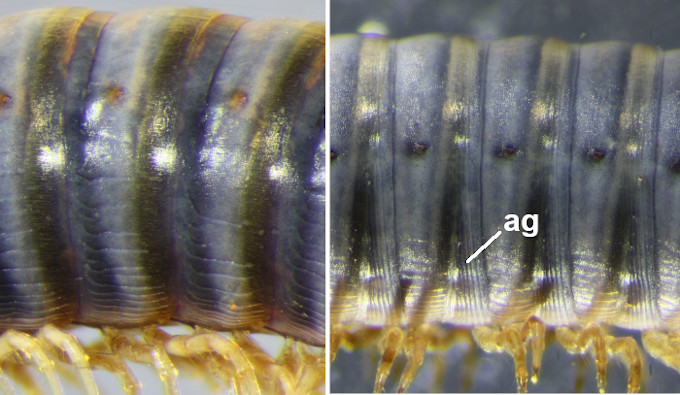
Midbody views (head to left) of T. greeni (left) and T. tasmanica (right). The annular grooves (ag) run around each body segment but are most clearly visible near the legs.
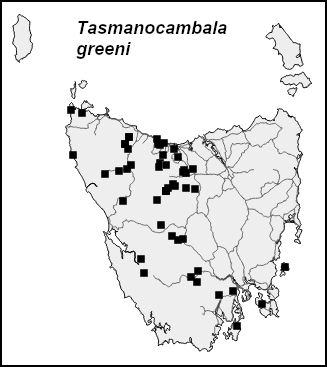 |
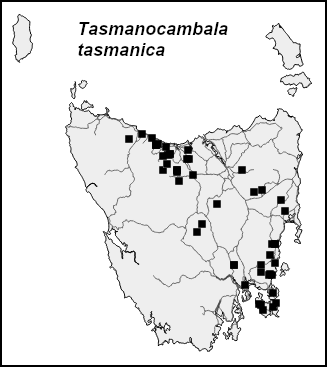 |
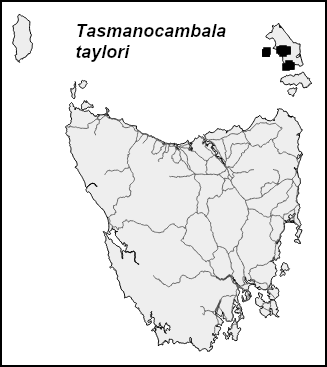 |
|
